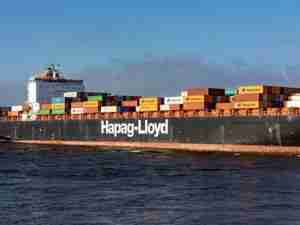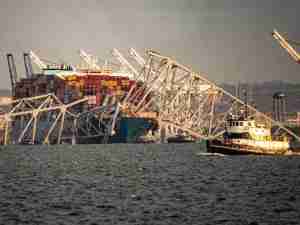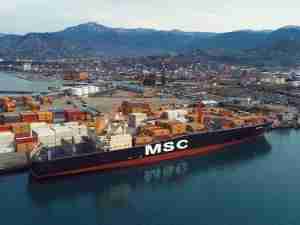Are mega-ships more dangerous than Trump for recovering container industry?
posted by AJOT | Aug 29 2017 at 07:59 AM | Liner Shipping
Oslo, Norway - New alliances, structural change and positive economic trends have transformed the container shipping market over the past year, driving growth and pushing business performance figures from deep red into black. However, despite long-term rates that are, in some cases, up 120% year on year, the future remains uncertain due to a looming shadow on the horizon. And, according to Xeneta, its not being cast by the ‘usual suspect’.
Xeneta, the leading global benchmarking and market intelligence platform for containerized ocean freight, says a recovery of the container segment is well underway. From a 2016 that saw the collapse of Hanjin and the top 20 market players posting combined net losses of USD 5 billion (Wall Street Journal), 2017 is shaping up to be a bumper year, as Xeneta CEO Patrik Berglund explains:
“Maersk’s recent 2017 Q2 financial report provides an interesting snapshot of the industry,” he notes. “Higher freight rates propelled revenues upwards by 8.4% to almost USD 10 billion for the quarter. Meanwhile, reports suggest that Hapag-Lloyd will triple its earnings this year.
“Rates have jumped since their historical lows last year. For the Chinese main port to Northern Europe route last May, the three-month rolling average for long-term rates for a 40-foot container stood at USD 655. This May it was USD 1438, an increase of 120%, and the same average is now up at USD 1618. Meanwhile we see US containerized ports are busier than ever, handling a projected 1.75 million TEU this month (Global Port Tracker) alone, the most on record. This comes despite the uncertainty caused by President Trump’s ‘America First’ doctrine and his withdrawal from initiatives like the Trans-Pacific Partnership. US container imports actually seem to be growing.”
Strong consumer demand, the restructuring of industry alliances – 90% of all container ship traffic is now accounted for by three major alliances (THE Alliance, OCEAN and 2M) – and Hanjin’s demise all help push up utilization and rates, Berglund says, but there remains uncertainty. And, the Xeneta CEO points out, the industry may be unwittingly planning to sabotage its own success.
“We remain optimistic with regards to the remainder of 2017, but the longer term becomes more complex,” he argues, pointing to one ‘huge’ issue – the increase in mega-ship capacity.
“A staggering 78 new mega-ships are due to come online for the Asia-Europe trades over the next two years, pushing capacity up by over 23%,” Berglund comments. “Mega-ships make obvious sense in terms of economy of scale and optimizing transport costs, but when you have this much of a capacity injection it requires a huge demand increase… and, well, where will that come from?
“Mega-ships of 18,000 TEUs need to command utilization rates of at least 91% to achieve cost savings. Even in the high volume Asia-Europe trades that is difficult and may necessitate lower than average rates for some volume, which, inevitably, will hit overall rate development.
“Each of the key alliance partners is playing catch up with one another, trying to reap the mega-ship benefits. In doing so they’re going to flood the market with new capacity and risk reversing current positive trends. This is a potential mega-problem in waiting.”
Berglund says that all stakeholders in the container shipping supply chain need to pay close attention to the market to stay ahead of developments and get the best rates for their assets, services and cargoes.
“Platforms such as Xeneta, which crowd sources real-time global shipping data from major international businesses to give users unparalleled insight, remain the most effective way of doing this,” he says. “By benchmarking accurately against the market, decision makers will be better informed, negotiations more effective and better value can be achieved.
“This sector, just like the global political scene, can be highly unpredictable ” Berglund concludes, “and the only way to counter that is by accessing the very best inside intelligence.”
Xeneta gathers global shipping data from a community of over 700 leading businesses, covering more than 160,000 port-to-port pairings and over 35 million contracted rates.









